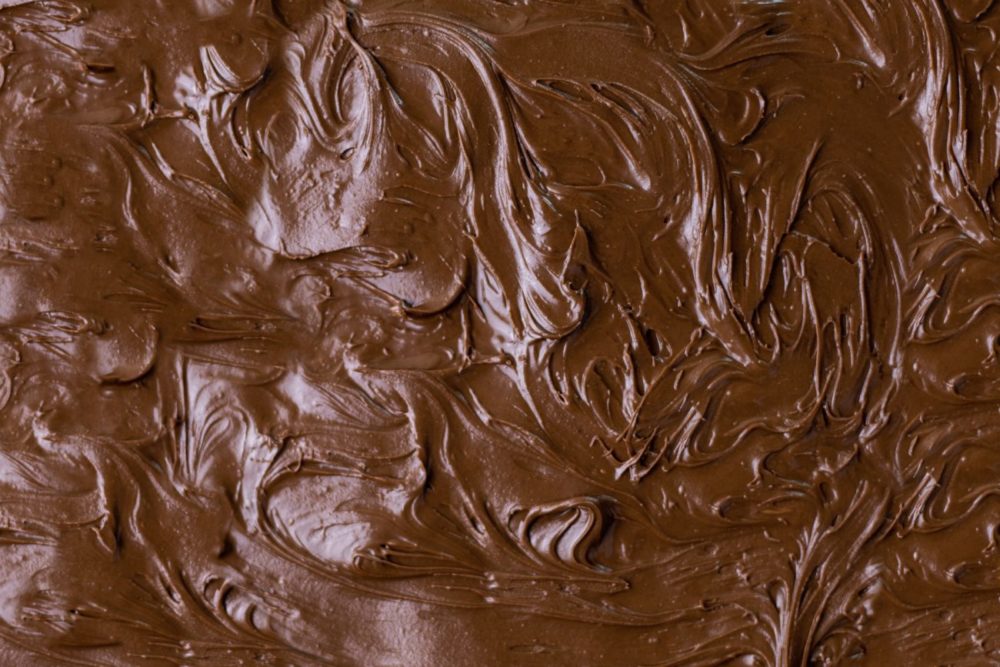Each of us should consume 30 grams of fiber every day to keep our intestines, immune system and heart healthy. Fiber is primarily found in whole grains, veggies, fruit... and chocolate!
We explain why fiber is so important for our bodies and whether chocolate really has what it takes to be your number one source of fiber. Spoilers: number one might not. But you will still eat the next piece of chocolate with a good feeling. 😉
Dietary fiber is also called "plant fiber" because it acts as the supporting framework for many plants. We get these carbohydrate compounds from food. Foods that are particularly high in fiber are whole grain products, raw vegetables and fruit, as well as legumes and nuts. And chocolate doesn't do badly either! As the word “ballast” already indicates, fiber that we ingest through food remains largely undigested. Sounds pointless? But on the contrary. Although not digested, fiber is essential to our health
There are numerous studies on the effects of dietary fiber on our health. So far, not all connections could be validated. However, everyone agrees on one point: Fiber is important for our body and should be an integral part of a healthy diet. Everyone is probably familiar with this effect: Wholemeal bread makes you feel fuller than white toast. Dietary fibers are responsible. They swell up in the stomach and ensure that the feeling of satiety sets in earlier and lasts longer. This swelling effect also helps in the further course of digestion. Dietary fiber protects the intestines and promotes healthy digestion. Some studies even show a reduced risk of colon cancer as a result of a high-fiber diet.
From the gut, fiber affects our entire body. An example: Important fatty acids are produced in the intestine as a result of their breakdown. These, in turn, are essential for a functioning immune and cardiovascular system. Propionic acid, for example, protects against high blood pressure and reduces the risk of heart attack. According to the DGE (German Society for Nutrition eV), fiber also probably reduces the risk of obesity and type 2 diabetes. Fiber-rich food also causes the blood sugar level to rise more slowly and is therefore particularly important for diabetes patients. The DGE recommends at least 30 grams of fiber per day. According to estimates, however, the daily intake for most of us is well below this value.
Cocoa is rich in protein and fiber. Depending on the form and final product you enjoy it in, it can actually be a tasty source of fiber.
Some examples:
Source: DGE , package information
The recommended daily portion of chocolate is 25 grams (ughhh cough, our chocolate consumption is a little bit above this value 🙈). In the case of the “Triple Coconut”, this portion would therefore mean a fiber intake of 4 g. We remember: Each of us should eat at least 30 g of fiber per day. Theoretically, 13% of the dietary fiber target can be achieved with a daily piece of chocolate!
Aaabut. Even we, as chocolate fans, are aware that the comparison between wholemeal bread and chocolate is flawed. We would also definitely not recommend that you eat 200 g of chocolate every day in order to get enough fiber. Nevertheless, we find it exciting to deal with the nutritional values and effects of chocolate. We find: This way we can enjoy even more consciously. This also includes choosing the right chocolate. After all, what good is a slower rise in blood sugar levels from dietary fiber if it also contains a lot of sugar and artificial flavors? We have 3 tips on how to integrate chocolate into a healthy diet.
 Chocolates - part of a high-fiber diet? ©Unsplash
Chocolates - part of a high-fiber diet? ©Unsplash
Cocoa never ceases to surprise us. Even when processed, it's a good source of fiber...although, of course, chocolate still stands behind whole grains, fruit, and veg. It's still a good feeling to get to know the miracle bean cocoa a little better, isn't it? Enjoy your next piece of chocolate!
Are you looking for high-quality chocolate off the supermarket shelf? Then take a look at our online shop .
By the way: Chocolate has even more superpowers! You can read here how it can help you lose weight. And how dark chocolate works against stress, you will learn in this article .
Sources:
Bartolomaeus H, Balogh A, Yakoub M, Homann S, Markó L, Höges S, Wilck N (2019). Short Chain Fatty Acid ...
DGE (July 31, 2012). More fiber please!
We explain why fiber is so important for our bodies and whether chocolate really has what it takes to be your number one source of fiber. Spoilers: number one might not. But you will still eat the next piece of chocolate with a good feeling. 😉
What is dietary fiber and where is it found?
Dietary fiber is also called "plant fiber" because it acts as the supporting framework for many plants. We get these carbohydrate compounds from food. Foods that are particularly high in fiber are whole grain products, raw vegetables and fruit, as well as legumes and nuts. And chocolate doesn't do badly either! As the word “ballast” already indicates, fiber that we ingest through food remains largely undigested. Sounds pointless? But on the contrary. Although not digested, fiber is essential to our health
Why do we need fiber?
There are numerous studies on the effects of dietary fiber on our health. So far, not all connections could be validated. However, everyone agrees on one point: Fiber is important for our body and should be an integral part of a healthy diet. Everyone is probably familiar with this effect: Wholemeal bread makes you feel fuller than white toast. Dietary fibers are responsible. They swell up in the stomach and ensure that the feeling of satiety sets in earlier and lasts longer. This swelling effect also helps in the further course of digestion. Dietary fiber protects the intestines and promotes healthy digestion. Some studies even show a reduced risk of colon cancer as a result of a high-fiber diet.
From the gut, fiber affects our entire body. An example: Important fatty acids are produced in the intestine as a result of their breakdown. These, in turn, are essential for a functioning immune and cardiovascular system. Propionic acid, for example, protects against high blood pressure and reduces the risk of heart attack. According to the DGE (German Society for Nutrition eV), fiber also probably reduces the risk of obesity and type 2 diabetes. Fiber-rich food also causes the blood sugar level to rise more slowly and is therefore particularly important for diabetes patients. The DGE recommends at least 30 grams of fiber per day. According to estimates, however, the daily intake for most of us is well below this value.
Dietary fiber in chocolate - what's behind the rumors?
Cocoa is rich in protein and fiber. Depending on the form and final product you enjoy it in, it can actually be a tasty source of fiber.
Some examples:
| product | Dietary fiber content per 100 g |
| Alnatura cocoa powder, slightly de-oiled | 30.8g |
| Chocolate with over 70% cocoa content | average 11 g |
| Raaka Chocolate “Triple Coconut” | 16g |
| for comparison: wholemeal bread | 8g |
Source: DGE , package information
The recommended daily portion of chocolate is 25 grams (ughhh cough, our chocolate consumption is a little bit above this value 🙈). In the case of the “Triple Coconut”, this portion would therefore mean a fiber intake of 4 g. We remember: Each of us should eat at least 30 g of fiber per day. Theoretically, 13% of the dietary fiber target can be achieved with a daily piece of chocolate!
Aaabut. Even we, as chocolate fans, are aware that the comparison between wholemeal bread and chocolate is flawed. We would also definitely not recommend that you eat 200 g of chocolate every day in order to get enough fiber. Nevertheless, we find it exciting to deal with the nutritional values and effects of chocolate. We find: This way we can enjoy even more consciously. This also includes choosing the right chocolate. After all, what good is a slower rise in blood sugar levels from dietary fiber if it also contains a lot of sugar and artificial flavors? We have 3 tips on how to integrate chocolate into a healthy diet.
 Chocolates - part of a high-fiber diet? ©Unsplash
Chocolates - part of a high-fiber diet? ©Unsplash3 tips on how to incorporate chocolate into your high-fiber diet plan:
- Variety : Even we, as chocolate fans, advise against an only chocolate diet. 😉 Eat a varied and colorful diet. Then the piece of chocolate doesn't have to be a sin.
- Quality : When choosing chocolate, look for good quality and high-quality ingredients. Avoid flavors and additives such as vanillin, butterfat or soy lecithin, because good chocolate doesn't need them.
- Cocoa : Do you want to do something good for your body when it comes to fiber? Then it is best to use high-quality chocolate with a high cocoa content. Because that's where the valuable dietary fiber is in the cocoa. Avoid chocolates that contain a lot of sugar - this negates the healthy effect.
Miracle bean cocoa
Cocoa never ceases to surprise us. Even when processed, it's a good source of fiber...although, of course, chocolate still stands behind whole grains, fruit, and veg. It's still a good feeling to get to know the miracle bean cocoa a little better, isn't it? Enjoy your next piece of chocolate!
Are you looking for high-quality chocolate off the supermarket shelf? Then take a look at our online shop .
By the way: Chocolate has even more superpowers! You can read here how it can help you lose weight. And how dark chocolate works against stress, you will learn in this article .
Sources:
Bartolomaeus H, Balogh A, Yakoub M, Homann S, Markó L, Höges S, Wilck N (2019). Short Chain Fatty Acid ...
DGE (July 31, 2012). More fiber please!



